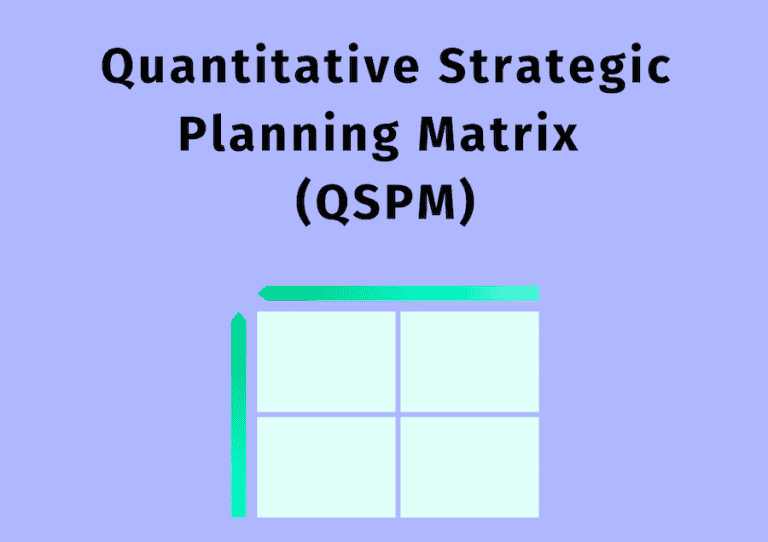

Picking the right strategy is crucial for business success, but deciding between options can be challenging. Relying on gut feelings and opinions makes it hard to determine the best path forward objectively. That’s where the Quantitative Strategic Planning Matrix (QSPM) comes in handy. This analytical tool helps leaders evaluate strategic alternatives systematically and make evidence-based choices.
The Quantitative Strategic Planning Matrix (QSPM) is an analytical framework that allows organizations to make objective, data-driven strategic decisions from among multiple options.
The QSPM, developed by Fred R. David in the 1980s, provides a structured methodology to assess feasible strategy options. It works by comparing each alternative against critical internal and external success factors impacting your business. By quantifying subjective assessments into hard data, the QSPM enables fact-based and confident decision-making.
Specifically, the QSPM utilizes attractiveness scores to rate each option’s alignment with key success factors. These scores are multiplied by weights assigned to the factors based on importance. The totals reveal which strategy has the highest overall desirability.
Follow these six steps to develop a QSPM tailored to your business situation:
List the most vital external threats/opportunities and internal strengths/weaknesses. Draw these from SWOT analysis and other assessments.
Allocate weights to each factor based on its importance to success. Higher weights indicate greater importance.
Identify 3-4 distinct options to evaluate. Avoid overly long lists that are cumbersome to compare.
Rate how attractive each option is for each factor on a 1-4 scale (1 = not attractive, 4 = highly attractive).
Multiply attractiveness scores by weights. Higher scores signal greater desirability.
The option with the highest total score is most aligned to key success factors.
The QSPM provides several advantages as a strategic decision-making tool:
The matrix can be used to evaluate any strategic decision like entering new markets or launching new products. It’s especially helpful when the best path forward seems unclear.
To maximize the value of your Quantitative Strategic Planning Matrix:
With its fact-based analytical approach, the QSPM gives leaders confidence they are selecting the optimal strategy for their organization. Converting subjective opinions into hard data paves the way for smart strategic decision-making. By providing a visual map of how options stack up, the QSPM enables organizations to pivot toward the path most aligned with their critical success factors.
The QSPM Matrix helps in picking the right strategy if you are struggling to select the best strategy for your business from multiple options. This analytical tool lets you objectively assess possible strategies against critical internal and external success factors.
To calculate a QSPM, first list your key success factors down the left side. Next, assign weights to each one based on importance. Then across the top, lay out your strategic options. Now comes the core analysis: score how attractive each option is for each factor on a 1-4 scale. Multiply these attractiveness scores by the weights, sum up the totals, and voilà – you can see which strategy scores the highest.
The QSPM total score is the sum of the weighted attractiveness scores for each strategic option. It represents the overall desirability of that option.
There is no set limit, but examining more than 4-5 strategies can become cumbersome. It’s best to focus on 3-4 distinct options that warrant deeper evaluation.
When creating a QSPM, you should identify the most critical internal and external factors for success, determine weights and attractiveness scores thoughtfully, and involve a team to enhance objectivity. Utilizing insights from preceding analyses like SWOT is also recommended.
onEntrepreneur is the go-to source for entrepreneurs looking to get ahead. Our online magazine offers practical, actionable advice to help startups succeed across key areas like business strategy, marketing, technology, leadership, management and more. Sign up for our regularly updated newsletter to receive our latest articles and insights directly in your inbox.